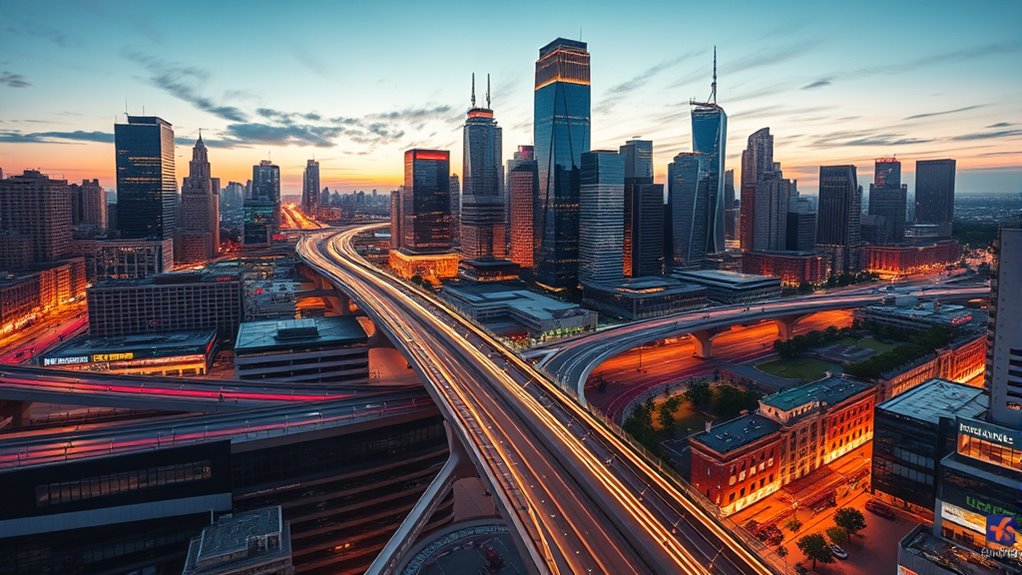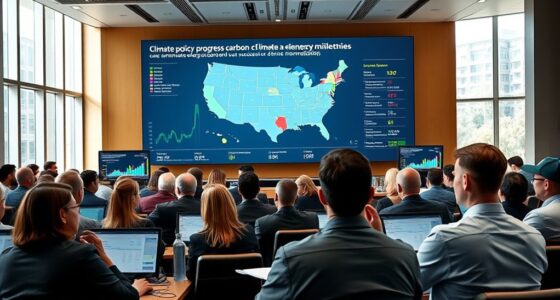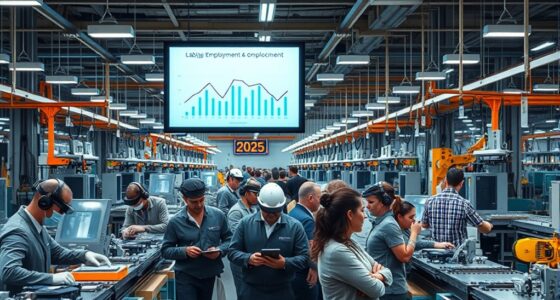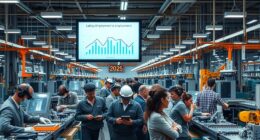In 2025, new infrastructure projects are transforming American cities by emphasizing resilience, climate adaptation, and smart technology integration. You’ll see more flexible systems designed to recover quickly from weather events and disruptions, making urban areas more sustainable. Cities are incorporating sensors, data analytics, and IoT devices to optimize traffic, energy, and water management. If you keep exploring, you’ll discover how these innovations are shaping smarter, more adaptable urban environments for the future.
Key Takeaways
- New infrastructure projects focus on enhancing urban resilience against climate change, natural disasters, and economic shifts.
- Integration of smart technologies enables real-time data management, improving traffic flow, energy use, and resource conservation.
- Cities are adopting flexible, climate-adaptive designs to recover quickly from disruptions like floods and heatwaves.
- Data-driven strategies optimize resource distribution, reduce waste, and improve urban service delivery.
- Future projects emphasize sustainable resource storage, such as climate-controlled and spoilage-aware systems, to ensure long-term urban resilience.
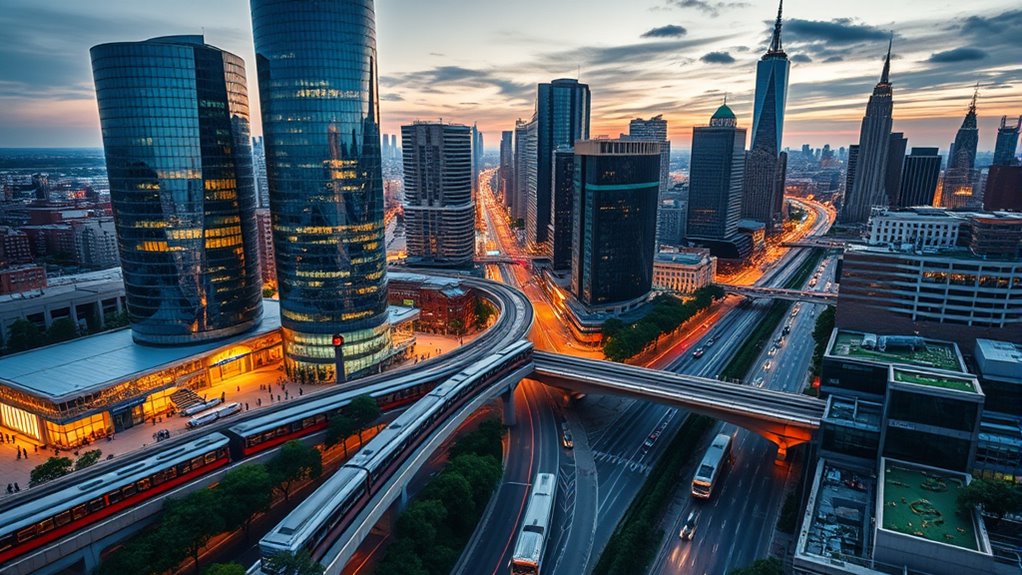
As we look toward 2025, the future of infrastructure hinges on innovative solutions that address today’s challenges and anticipate tomorrow’s needs. You’ll see cities transforming through projects that prioritize urban resilience and leverage smart technology. These advancements aren’t just about modernizing infrastructure—they’re about creating adaptable, efficient urban environments capable of withstanding the pressures of climate change, population growth, and economic shifts. Urban resilience becomes the cornerstone of these developments, ensuring that cities can recover quickly from disruptions like floods, heatwaves, or other climate-related events. Instead of static systems, you’ll experience infrastructure built with flexibility in mind—using materials, designs, and strategies that help cities bounce back faster and more effectively. Incorporating knowledge of expiration of vape juice and related spoilage indicators can also influence planning for climate-controlled storage and distribution of resources in urban settings.
Smart technology plays a *vital* role in this evolution. Cities are increasingly integrating sensors, data analytics, and IoT devices into their infrastructure. You might notice smarter traffic management systems that reduce congestion and pollution or adaptive energy grids that respond to real-time demand. These innovations allow city managers and residents to make informed decisions, optimize resource use, and improve quality of life. For example, smart water systems can detect leaks early, saving valuable resources and preventing costly damage. Similarly, intelligent transportation networks can reroute traffic around accidents or construction, minimizing delays and emissions. This seamless flow of information and automation creates more resilient urban environments that can adapt quickly to changing circumstances.
Frequently Asked Questions
How Are Infrastructure Projects Funded in Different Cities?
You’ll find that city infrastructure projects often rely on a mix of funding sources. Public-private partnerships enable cities to leverage private investments alongside public funds, making projects more feasible. Additionally, federal funding plays an essential role, providing grants and loans to support large-scale initiatives. By combining these resources, cities can finance transportation, utilities, and other critical infrastructure improvements effectively, ensuring future growth and development.
What Are the Environmental Impacts of New Infrastructure Developments?
Think of new infrastructure as a double-edged sword; it can cut pollution or carve deeper scars into the environment. You might see green energy projects reduce emissions and pollution, making your city cleaner. However, construction can disturb ecosystems and increase pollution temporarily. Your choices, like supporting sustainable projects, shape whether these developments help heal or harm the environment. Be mindful of balancing progress with nature’s needs.
How Will These Projects Affect Local Housing Markets?
These projects will likely boost local housing markets by improving neighborhood revitalization, attracting new residents, and increasing demand. However, you might see reduced housing affordability as property values rise, making it harder for some to find affordable options. You should stay informed about changes and advocate for policies that balance revitalization with affordability, ensuring the benefits of new infrastructure reach everyone in your community.
What Technologies Are Being Integrated Into New Infrastructure?
Imagine a city coming alive with invisible eyes—smart sensors—that monitor traffic, air quality, and energy use in real time. You’ll see these technologies woven into new infrastructure, powering streets with renewable energy and optimizing resources. You’re at the forefront of a smarter, greener future where every light, sensor, and system works seamlessly, transforming urban living into an efficient, sustainable experience that benefits everyone.
How Do Community Members Participate in Planning Processes?
You participate in planning processes through public consultation and participatory design, giving your feedback and ideas directly to planners. Attend community meetings, share your opinions, and engage in workshops to influence project decisions. Your involvement helps guarantee the infrastructure reflects your needs and priorities. By actively contributing, you help shape more inclusive, effective, and sustainable urban spaces, making your voice a crucial part of the development process.
Conclusion
As you see these projects reshape your city, you witness progress, embrace innovation, and experience growth. These new infrastructures enhance your commute, elevate your community, and empower your future. You become part of a transformation that connects neighborhoods, fuels economies, and fosters sustainability. So, stay engaged, support these changes, and watch your city thrive. Because with every new project, you’re not just witnessing progress—you’re shaping the vibrant, resilient future of your city.
